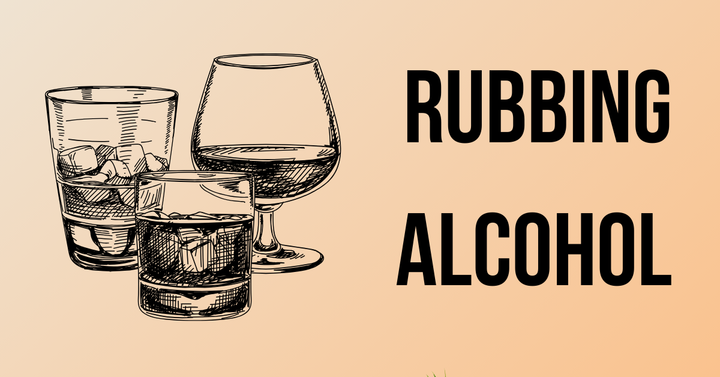Understanding Rubbing Alcohol | Uses, Benefits, and Precautions
Body
Rubbing alcohol is a common household item with a myriad of uses, ranging from first aid to cleaning and disinfecting. Despite its widespread availability and use, many people may not fully understand what rubbing alcohol is, how it works, or the various ways it can be applied in everyday life. This article will delve into the essential aspects of rubbing alcohol, exploring its composition, various applications, benefits, and necessary precautions.
What is Rubbing Alcohol?
Rubbing alcohol is a liquid solution composed primarily of either isopropyl alcohol or ethyl alcohol. It typically contains about 70% alcohol by volume, with the remaining 30% made up of water and other ingredients that help stabilize the solution. This concentration makes rubbing alcohol effective at killing bacteria, viruses, and other pathogens, making it an essential item in many households and medical kits.
The History of Rubbing Alcohol
The use of alcohol for medicinal and cleaning purposes dates back thousands of years, but rubbing alcohol as we know it today became widely available in the early 20th century. Originally developed as a surgical antiseptic, it quickly became popular for various other uses due to its effectiveness and relatively low cost. Over time, rubbing alcohol has become a staple in homes, hospitals, and laboratories worldwide.
Different Types of Rubbing Alcohol
There are two main types of rubbing alcohol: isopropyl alcohol and ethyl alcohol. Both types are effective for most applications, but they have some differences worth noting.
- Isopropyl Alcohol: This is the most common type of rubbing alcohol and is usually found in concentrations ranging from 70% to 99%. It is widely used for disinfecting surfaces, cleaning wounds, and sanitizing hands.
- Ethyl Alcohol: Also known as ethanol, this type of rubbing alcohol is the same alcohol found in alcoholic beverages, but in a denatured form that makes it unsafe for consumption. Ethyl alcohol is also effective for disinfecting and cleaning purposes, though it is less commonly used than isopropyl alcohol.
Common Uses of Rubbing Alcohol
Rubbing alcohol is an incredibly versatile product with numerous applications. Here are some of the most common uses:
1. Disinfecting and Cleaning
One of the primary uses of rubbing alcohol is as a disinfectant. Its ability to kill bacteria, viruses, and fungi makes it ideal for sanitizing surfaces, tools, and skin. Whether you're cleaning a cut or wiping down a kitchen counter, rubbing alcohol is an effective solution.
2. First Aid
Rubbing alcohol is a common component in first aid kits. It can be used to clean minor cuts, scrapes, and wounds, helping to prevent infection. Additionally, rubbing alcohol can be applied to the skin before injections to ensure that the area is free from harmful bacteria.
3. Personal Hygiene
While it may not be the first thing that comes to mind, rubbing alcohol can be used for personal hygiene purposes. For example, it can be applied to the armpits as a deodorant or used to clean oily skin. Some people also use it to remove unwanted body odor from their feet or shoes.
4. Household Cleaning
Rubbing alcohol is a powerful cleaning agent for various surfaces around the home. It can remove sticky residues, such as tape or sticker glue, and is excellent for cleaning glass, mirrors, and electronic devices. Unlike water-based cleaners, rubbing alcohol evaporates quickly, leaving no streaks or residue.
5. Stain Removal
Rubbing alcohol can be an effective stain remover for certain types of stains, such as ink, permanent marker, and grass. By dabbing a small amount of rubbing alcohol on the stain, you can often lift the stain without damaging the fabric.
6. Deodorizing
Bad smells in the home can be challenging to eliminate, but rubbing alcohol can help. It can be used to deodorize areas such as garbage cans, toilets, and even carpets. By killing the bacteria that cause odors, rubbing alcohol leaves your home smelling fresh and clean.
7. Cooling Agent
In hot weather or when someone is running a fever, rubbing alcohol can be used as a cooling agent. Applying it to the skin helps draw heat away from the body as the alcohol evaporates, providing a cooling sensation.
8. Pest Control
Rubbing alcohol can be used to deter or eliminate certain pests, such as bedbugs or fruit flies. Spraying rubbing alcohol directly on these pests can kill them on contact, and it can also be used to clean areas where pests are likely to hide.
Benefits of Using Rubbing Alcohol
The widespread use of rubbing alcohol is not just due to its versatility; it also offers several key benefits.
1. Affordable and Accessible
Rubbing alcohol is readily available at most drugstores and supermarkets, and it is generally inexpensive. This makes it an accessible option for people who need a reliable disinfectant or cleaning agent without breaking the bank.
2. Fast-Acting
One of the most significant advantages of rubbing alcohol is its fast-acting nature. It quickly evaporates, which allows it to kill germs and dry up moisture rapidly. This is particularly useful in medical settings, where speed is often of the essence.
3. Multi-Purpose
As we've explored, rubbing alcohol has countless uses, making it a valuable product to have on hand. Whether you need to clean a surface, sanitize your hands, or remove a stain, rubbing alcohol can do the job.
4. Non-Toxic (When Used Properly)
When used correctly, rubbing alcohol is relatively safe and non-toxic. It doesn't leave harmful residues and evaporates entirely, making it safe to use on most surfaces and skin. However, it's important to remember that rubbing alcohol should never be ingested, as it can be toxic if swallowed.
Precautions and Safety Tips for Using Rubbing Alcohol
While rubbing alcohol is an incredibly useful product, it's important to use it safely and responsibly. Here are some precautions to keep in mind:
1. Avoid Ingestion
Rubbing alcohol is toxic when ingested and can cause severe internal damage. If swallowed, it can lead to symptoms such as nausea, vomiting, headaches, dizziness, and even more severe complications such as respiratory failure or death. Always store rubbing alcohol out of reach of children and pets to prevent accidental ingestion.
2. Use in a Well-Ventilated Area
The fumes from rubbing alcohol can be strong and irritating, especially in confined spaces. Always use rubbing alcohol in a well-ventilated area to avoid inhaling excessive fumes. Prolonged exposure to the fumes can cause dizziness, headaches, and respiratory issues.
3. Avoid Open Flames
Rubbing alcohol is highly flammable. Avoid using it near open flames, sparks, or heat sources. After using rubbing alcohol, allow it to evaporate completely before lighting any flames in the area.
4. Avoid Contact with Eyes
Rubbing alcohol can cause irritation if it comes into contact with the eyes. If this occurs, rinse your eyes thoroughly with water and seek medical attention if necessary.
5. Be Cautious with Sensitive Skin
While rubbing alcohol is generally safe for skin application, it can cause irritation or dryness, especially in people with sensitive skin. If you experience any redness, itching, or discomfort after using rubbing alcohol on your skin, discontinue use and consult a healthcare professional.
Rubbing Alcohol and Its Role During the COVID-19 Pandemic
The COVID-19 pandemic brought rubbing alcohol into the spotlight as a crucial item for personal and public health. As people rushed to protect themselves from the virus, demand for rubbing alcohol skyrocketed. It became a key ingredient in hand sanitizers and disinfectants, helping to curb the spread of the virus. The pandemic highlighted the importance of rubbing alcohol as an accessible and effective tool in maintaining hygiene and reducing the risk of infection.
Environmental Impact of Rubbing Alcohol
While rubbing alcohol is an effective product, it's essential to consider its environmental impact. The production and disposal of rubbing alcohol can have environmental consequences. For example, the manufacturing process for alcohol-based products often involves the use of non-renewable resources. Additionally, improper disposal of rubbing alcohol can lead to pollution and harm to wildlife.
To minimize the environmental impact, it's essential to use rubbing alcohol responsibly and dispose of it properly. Avoid pouring rubbing alcohol down the drain or throwing it away with regular trash. Instead, look for local disposal guidelines that allow for the safe handling of chemical products.
Alternatives to Rubbing Alcohol
While rubbing alcohol is incredibly versatile, some people may seek alternatives for various reasons, such as skin sensitivity or environmental concerns. Here are some alternatives to consider:
- Hydrogen Peroxide: This is another common disinfectant that can be used to clean wounds, surfaces, and more. It is less harsh on the skin than rubbing alcohol and is also effective at killing bacteria and viruses.
- Vinegar: Vinegar is a natural disinfectant that can be used for cleaning purposes. While it may not be as potent as rubbing alcohol, it is a safer and more environmentally friendly option for some applications.
- Essential Oils: Some essential oils, such as tea tree oil or eucalyptus oil, have antimicrobial properties and can be used for cleaning and disinfecting. However, they should be diluted and used with caution, as they can cause skin irritation.











Comments